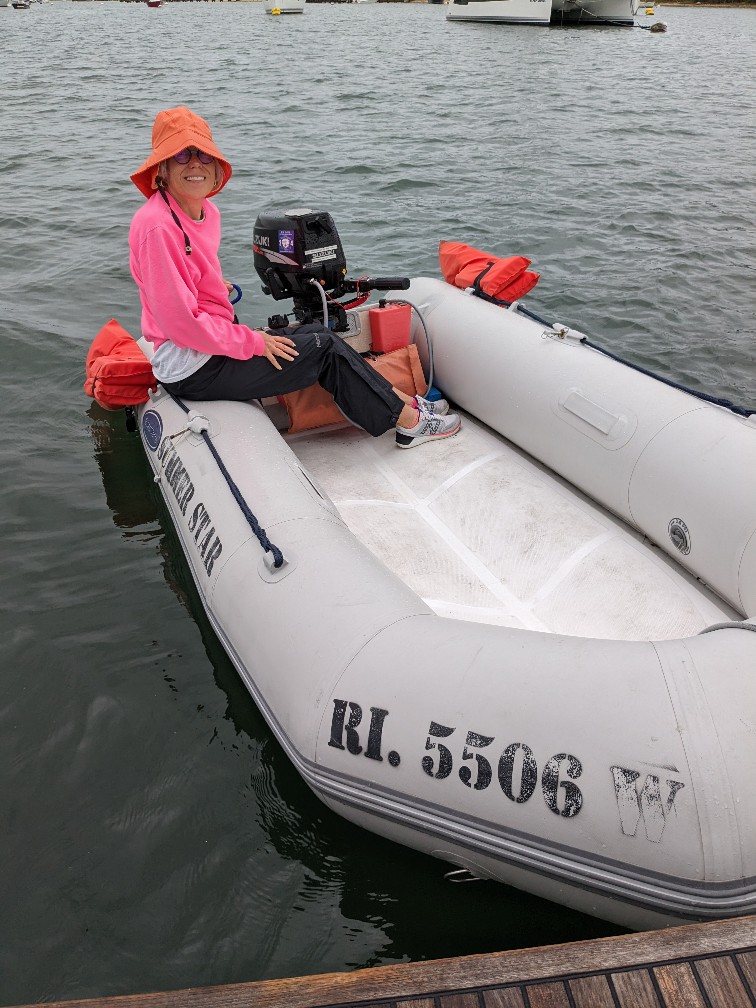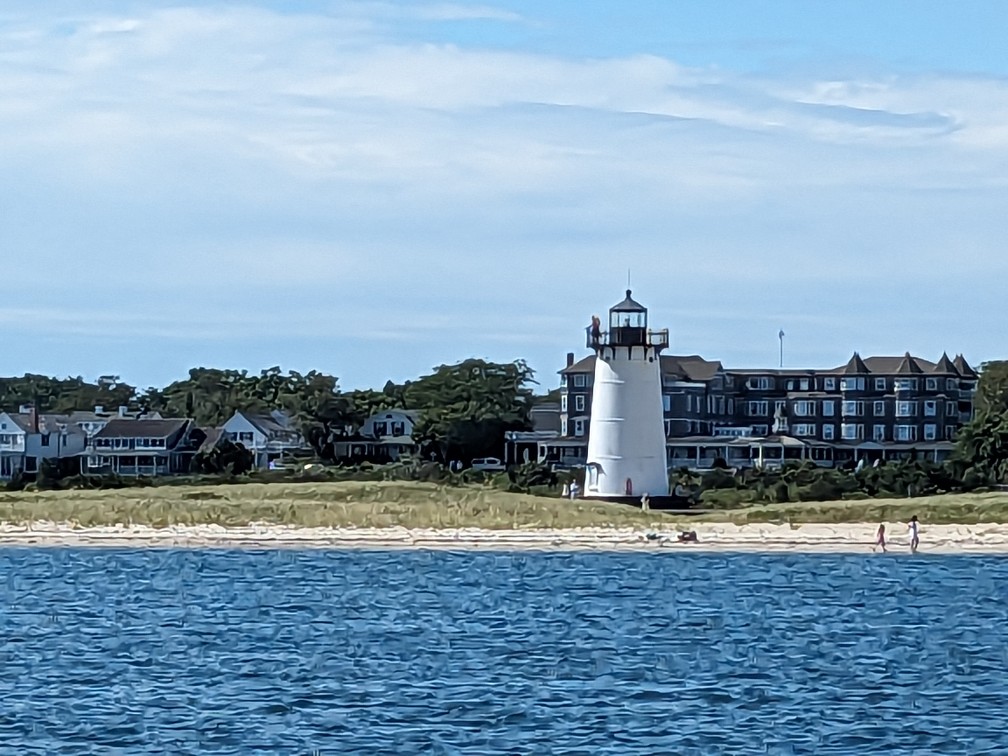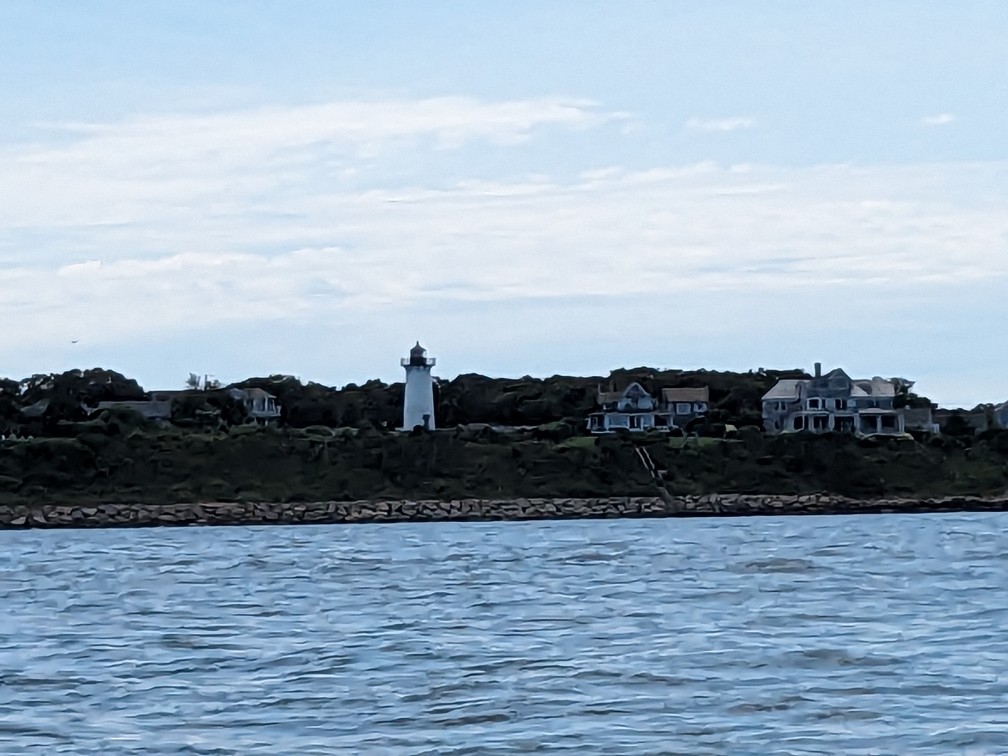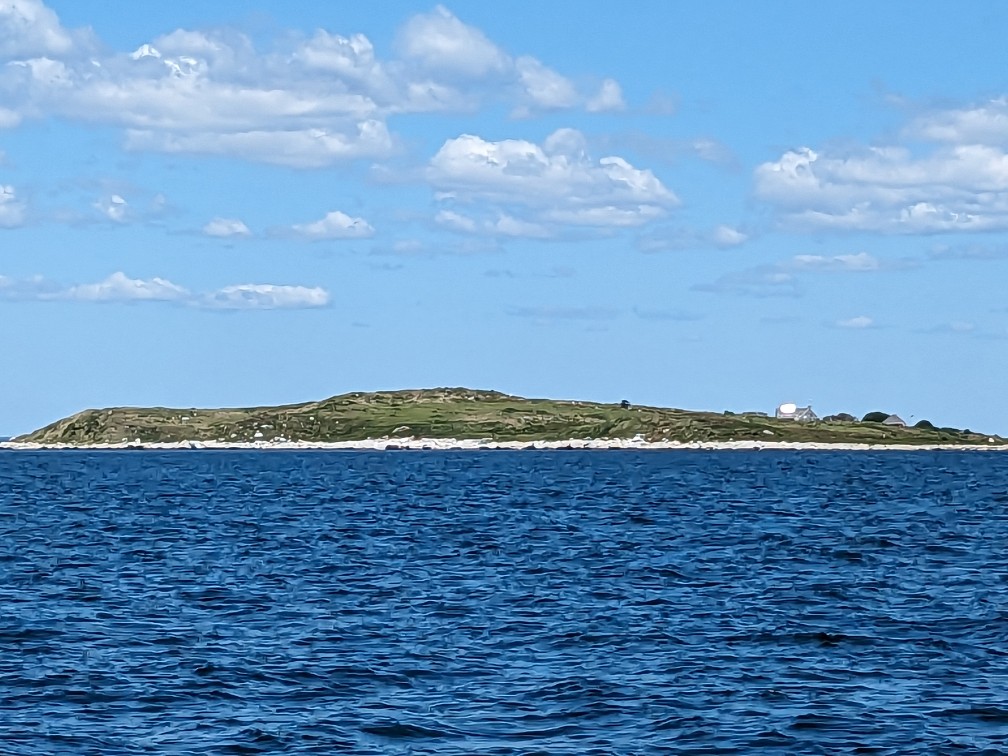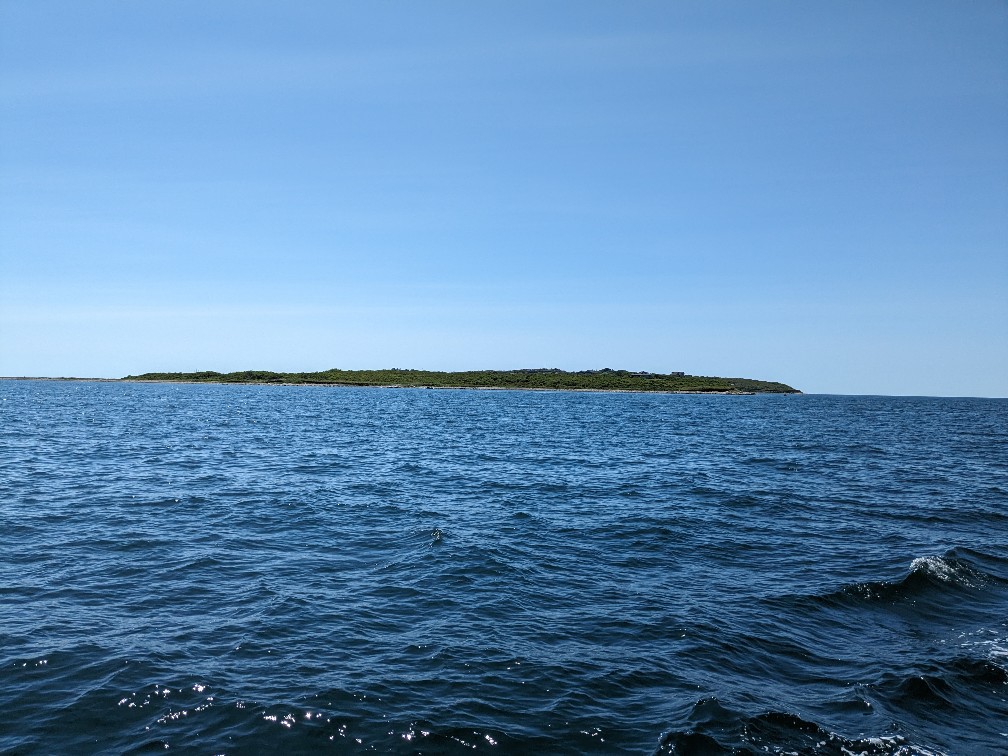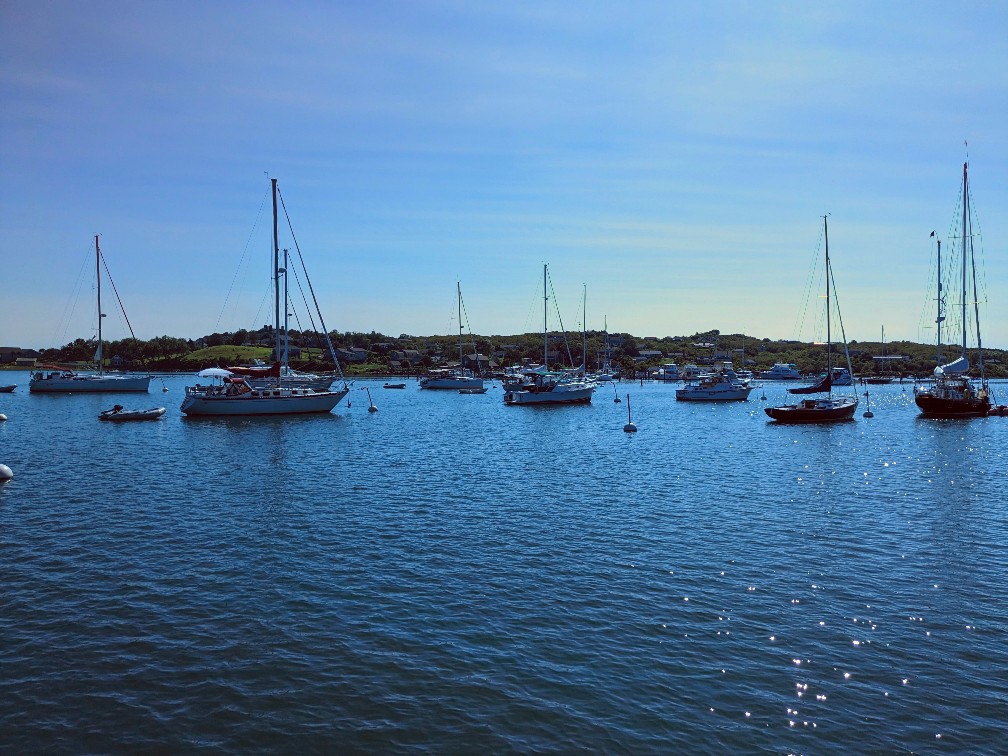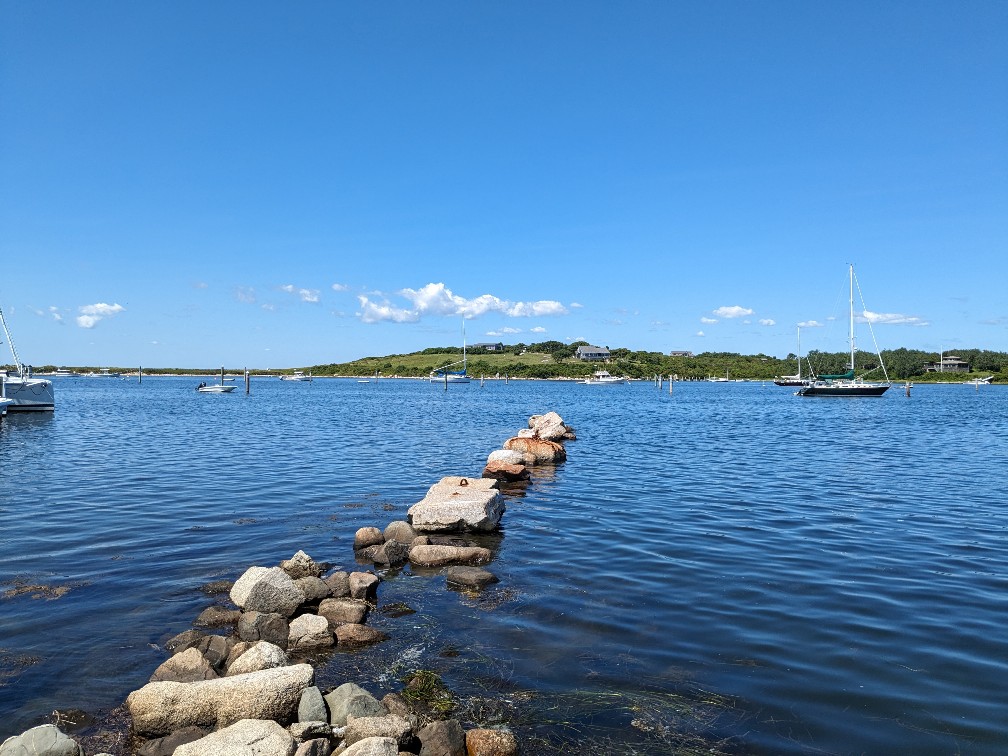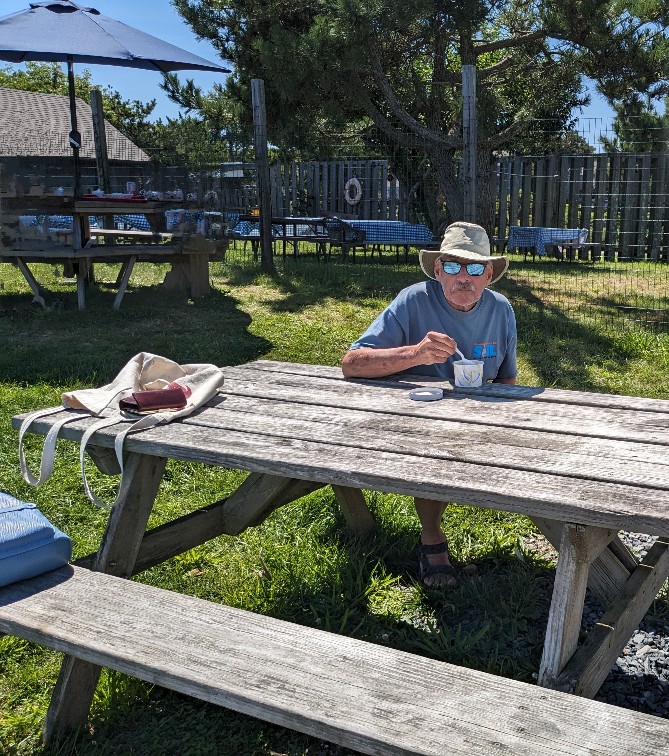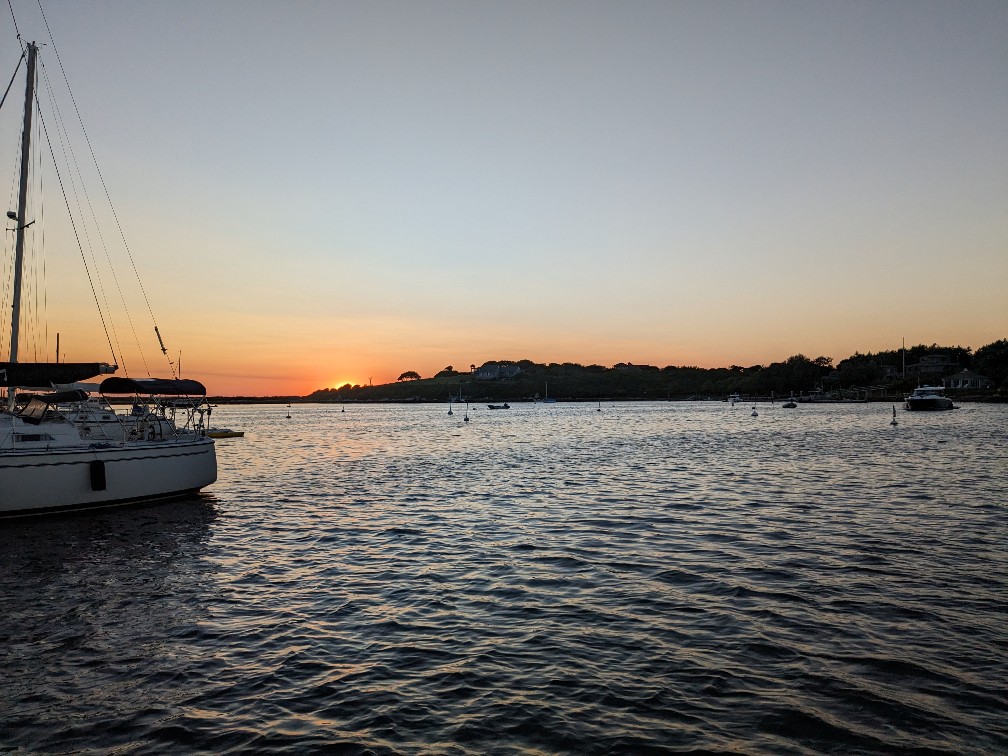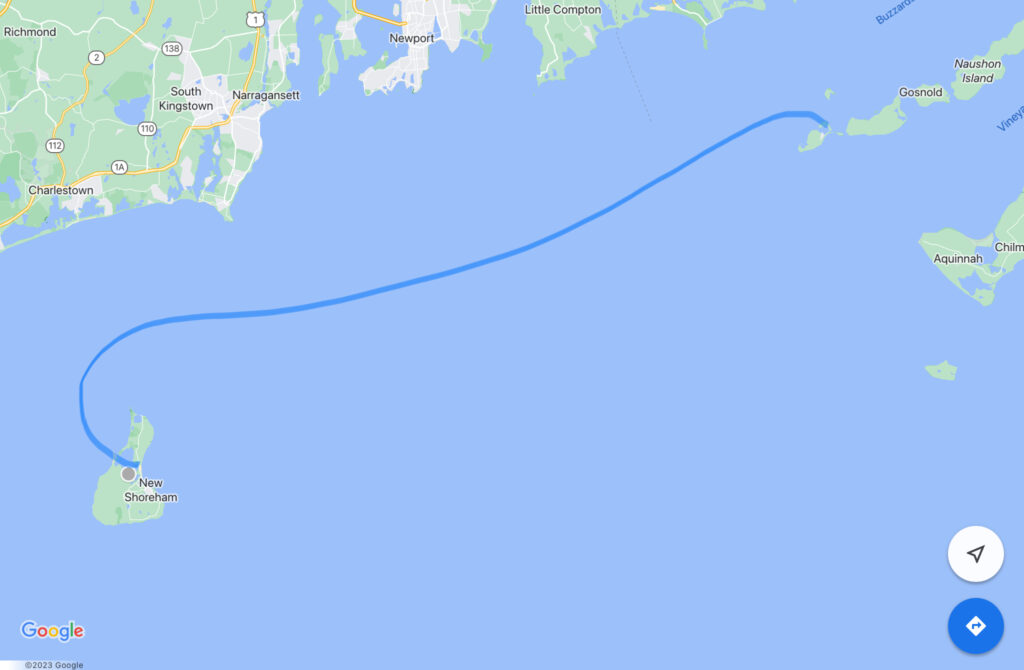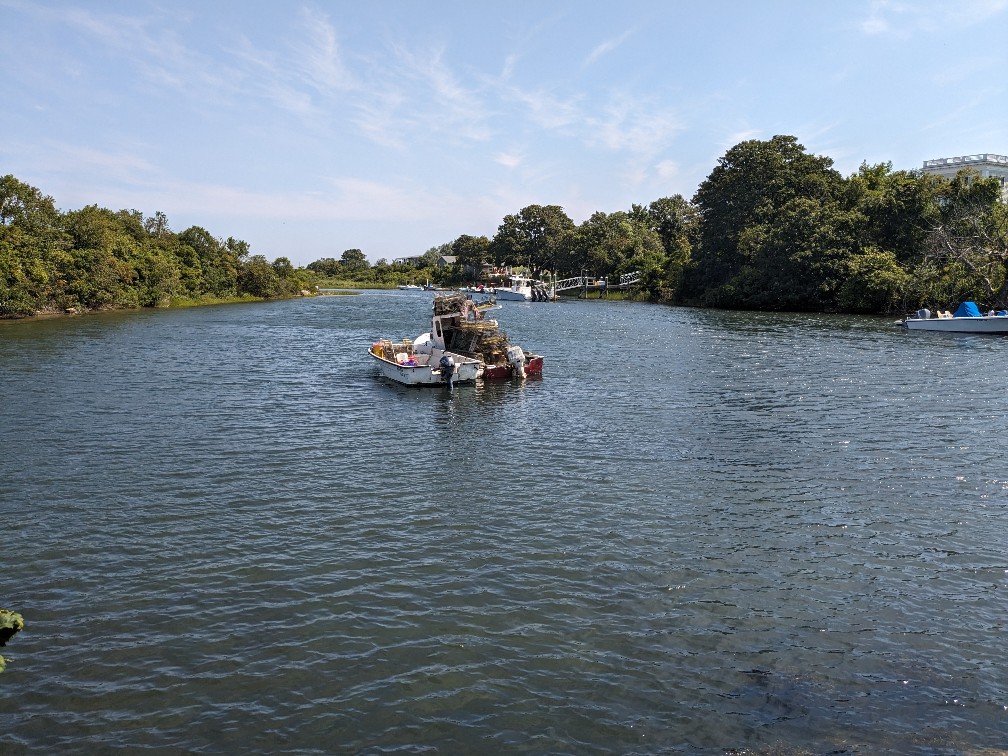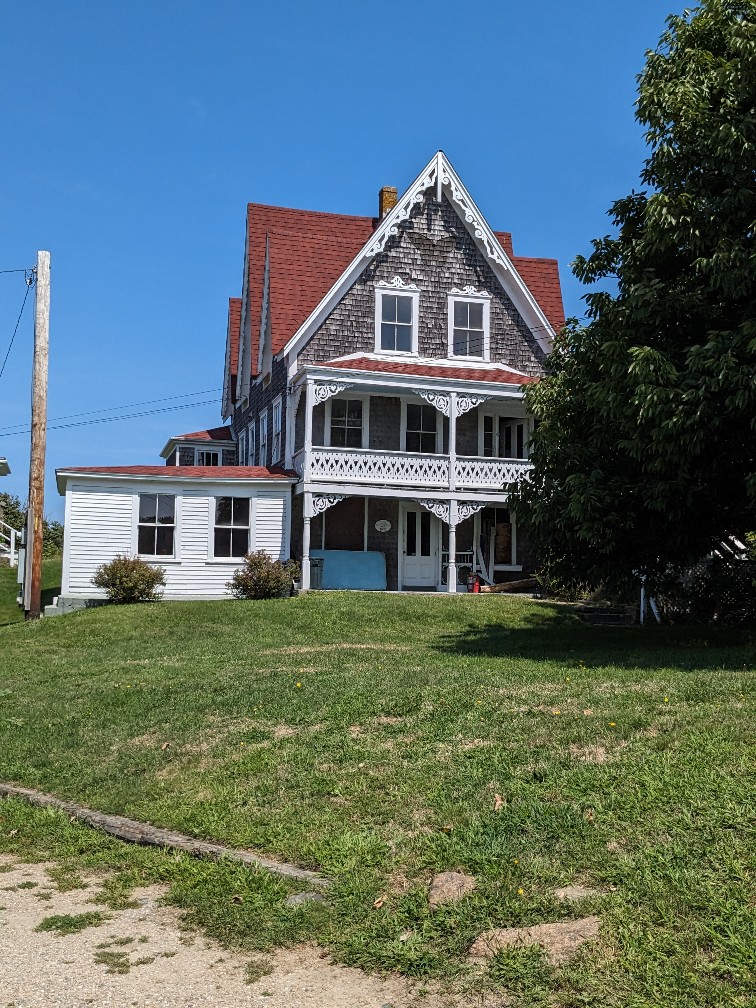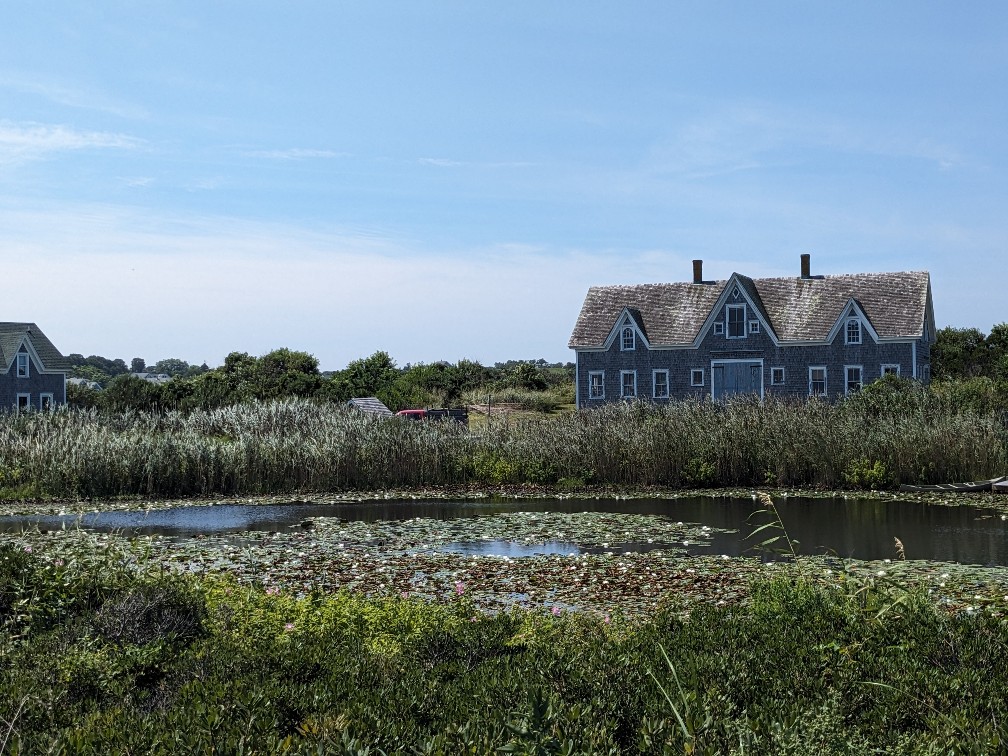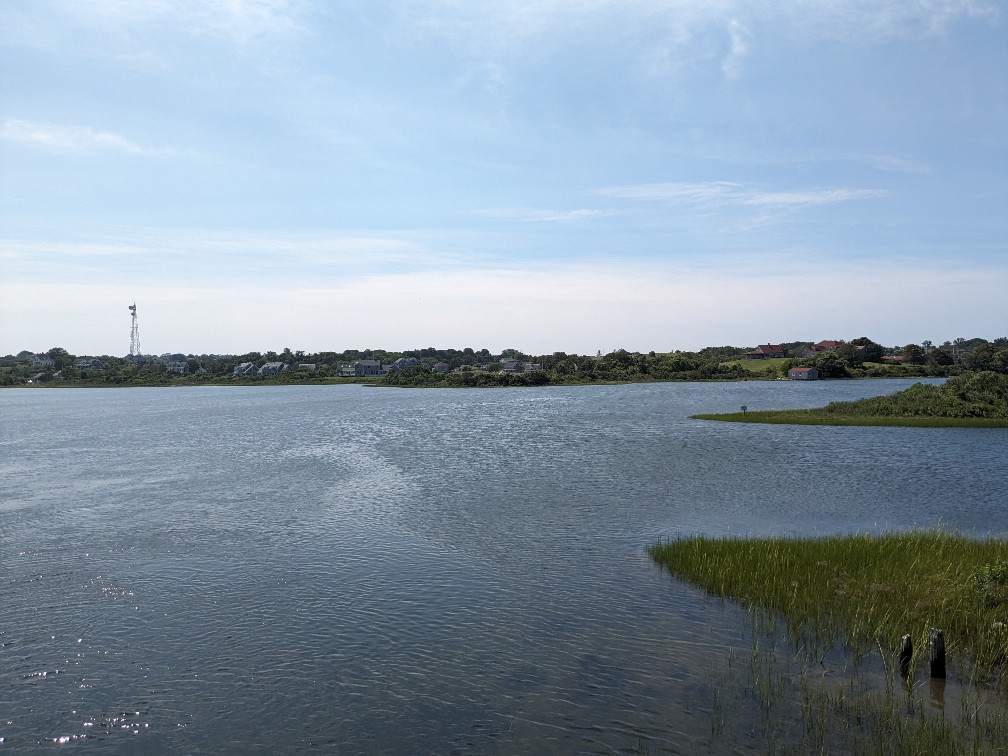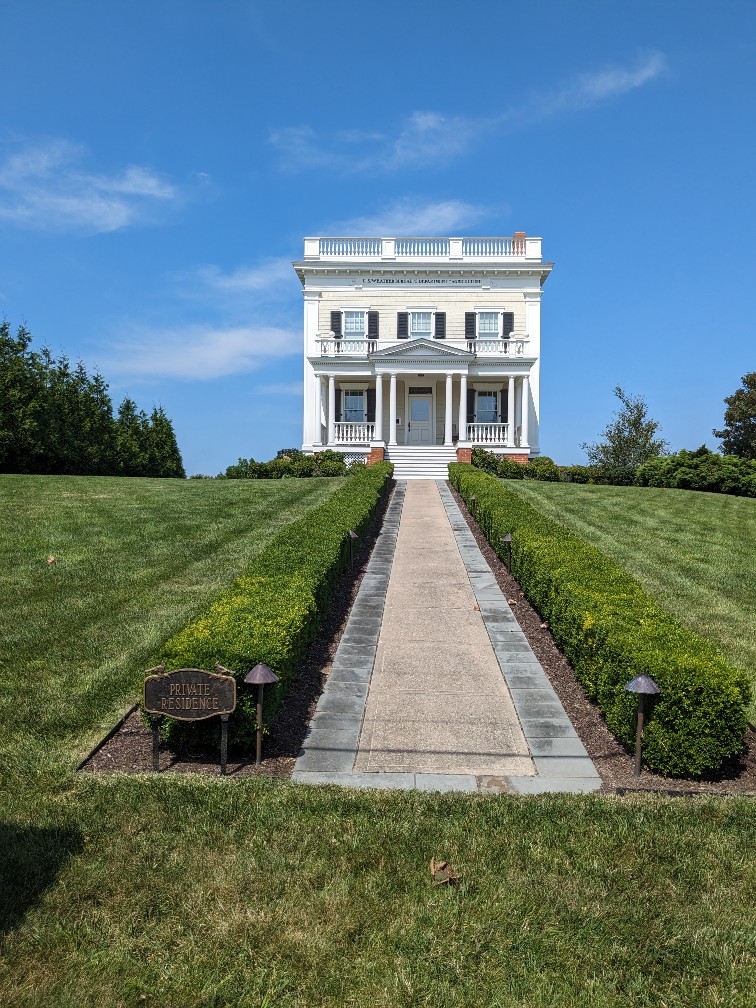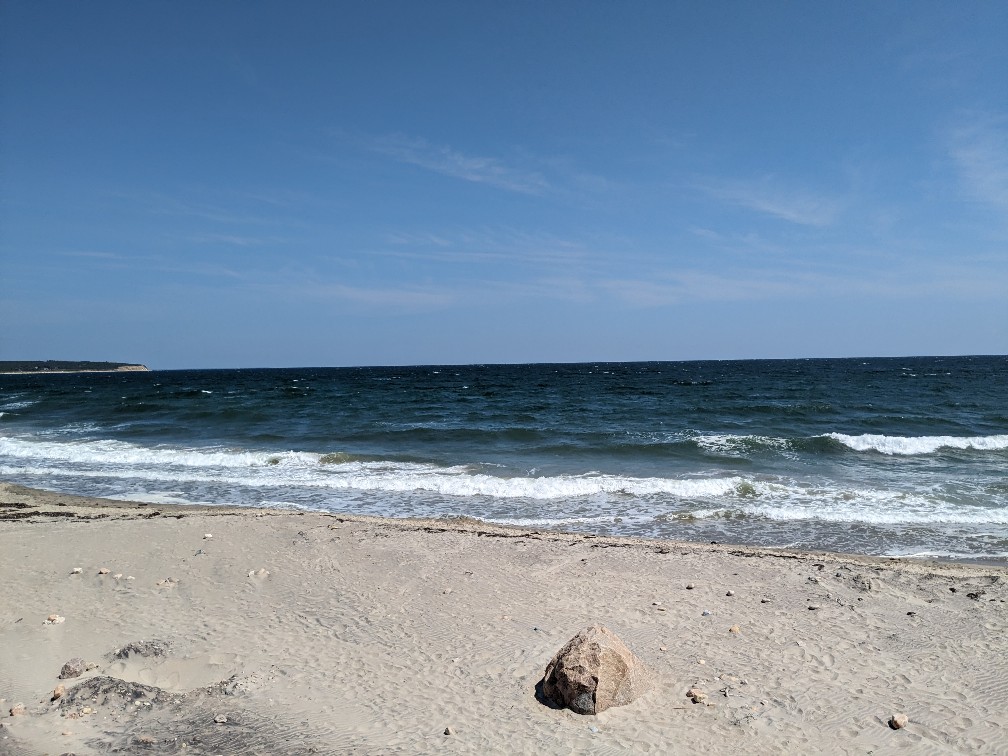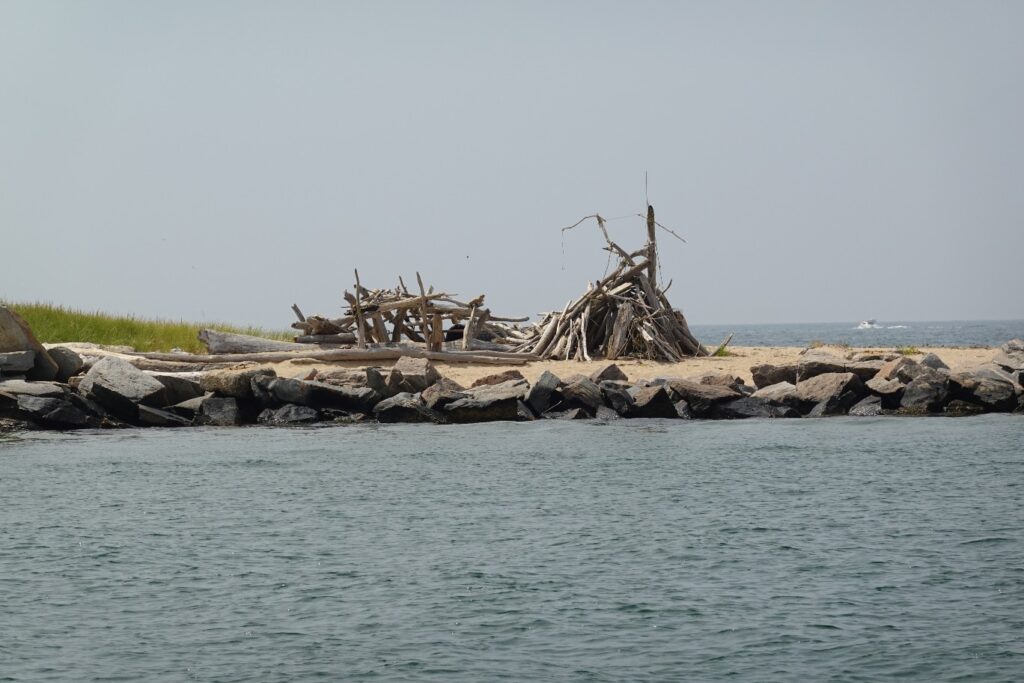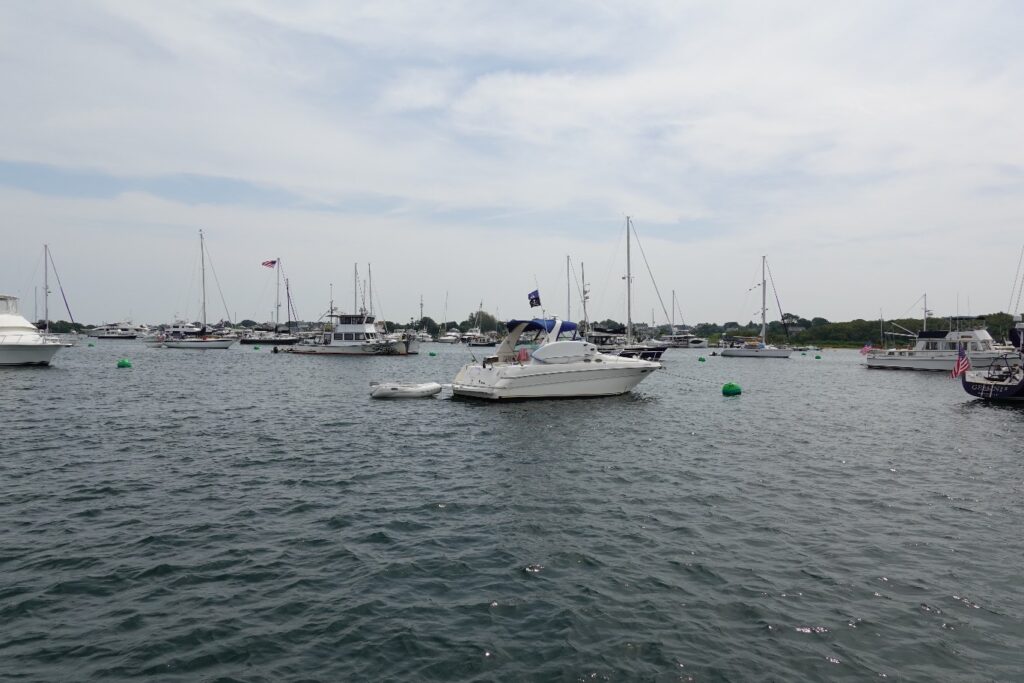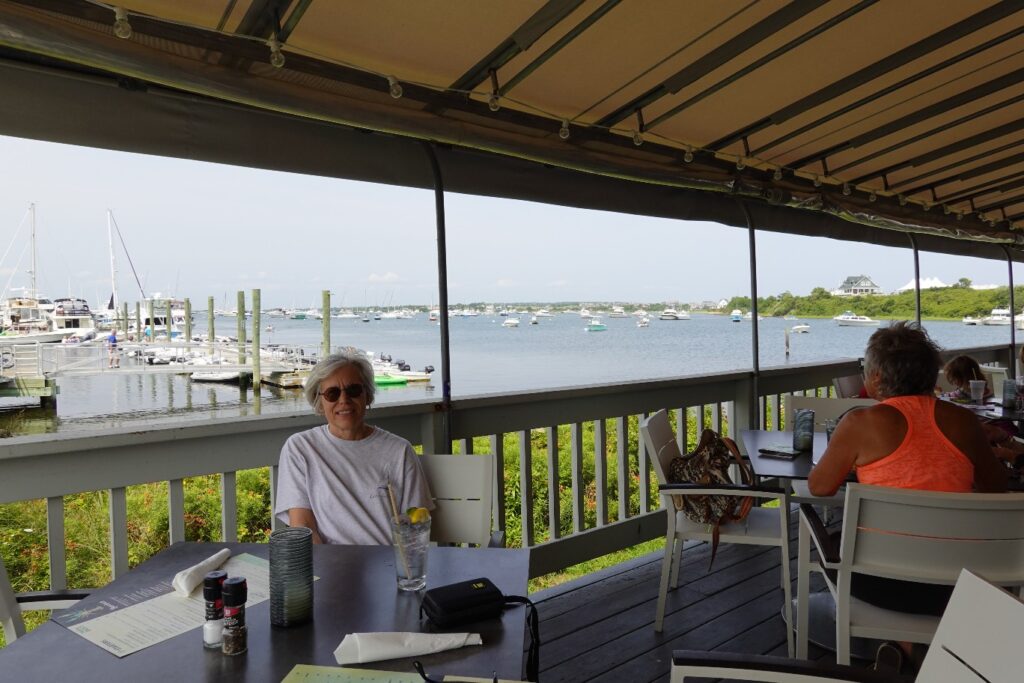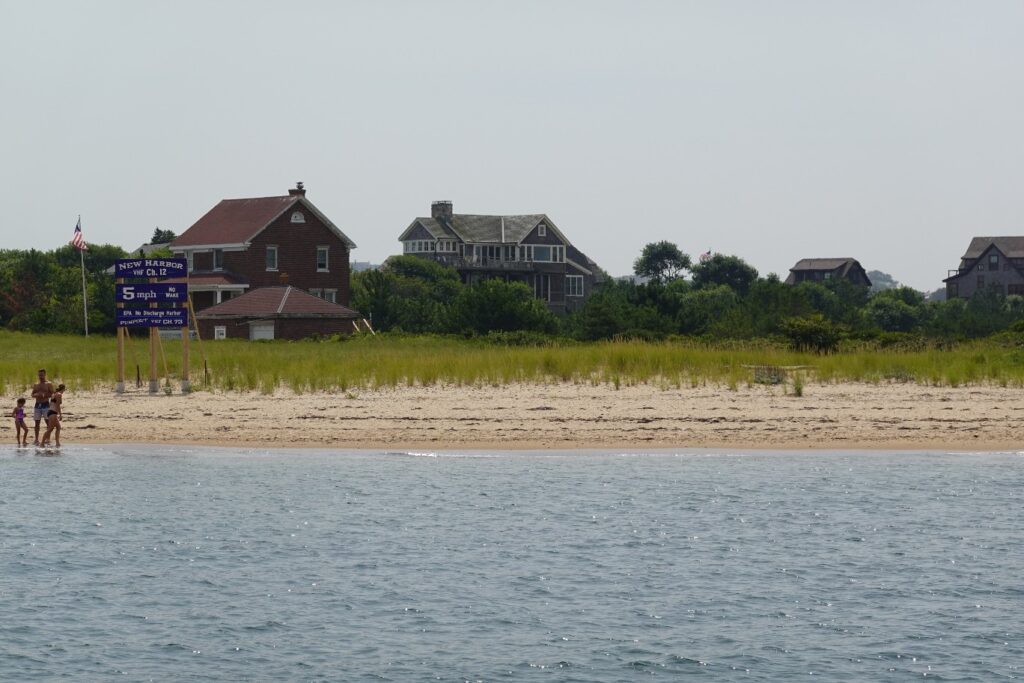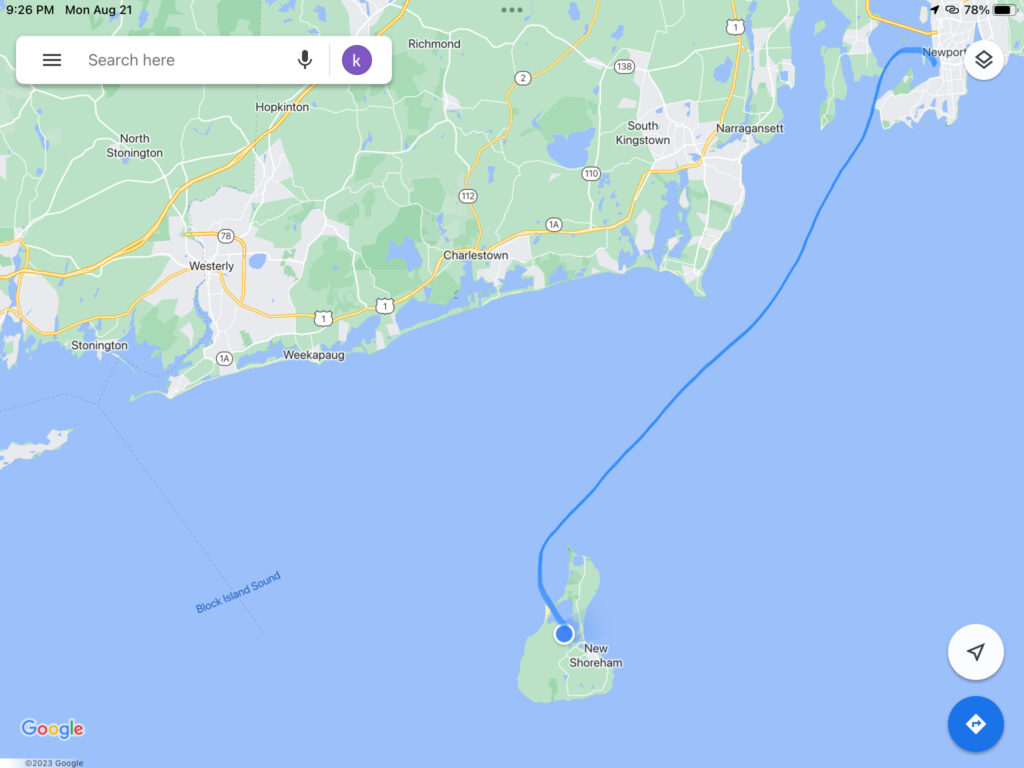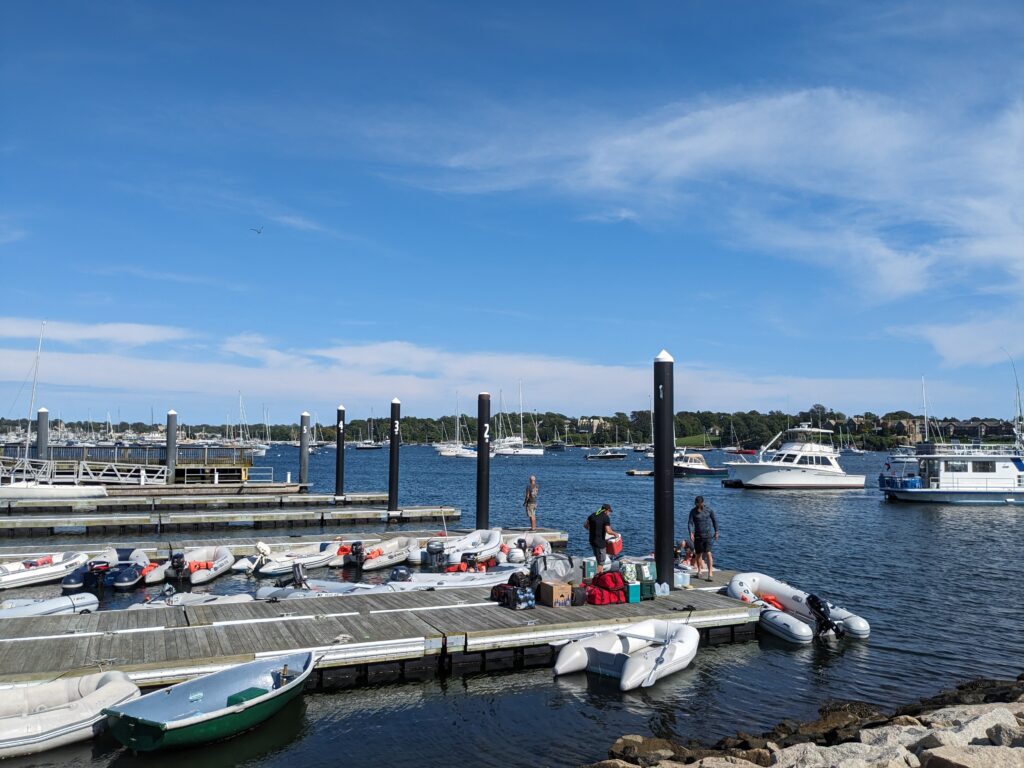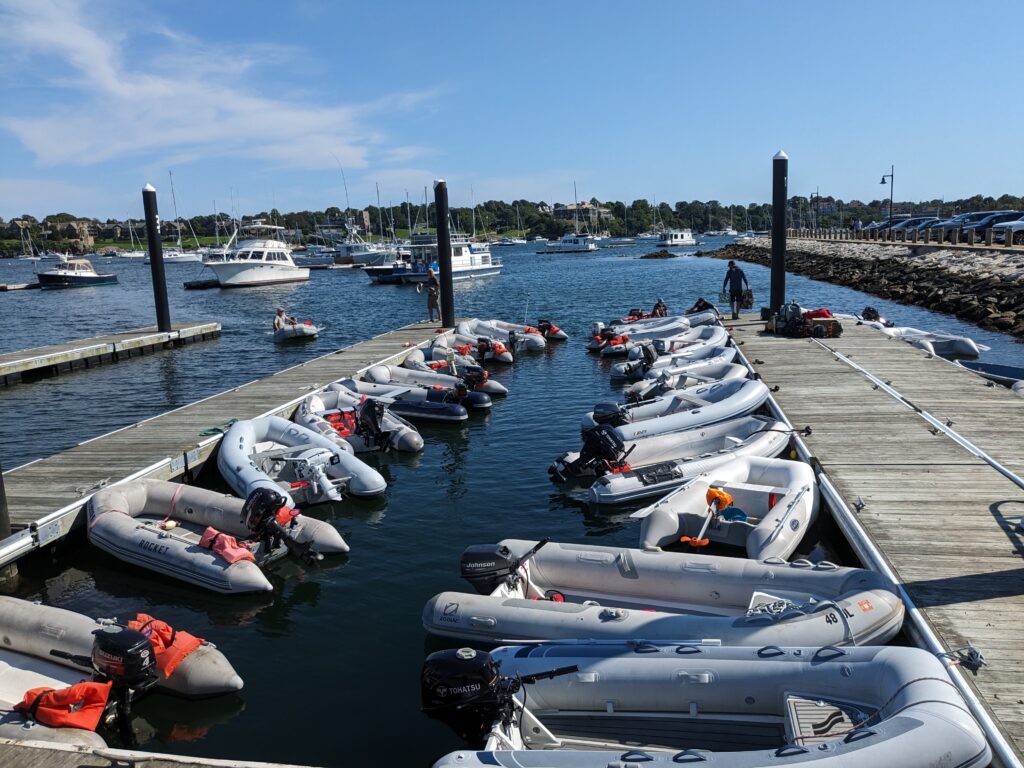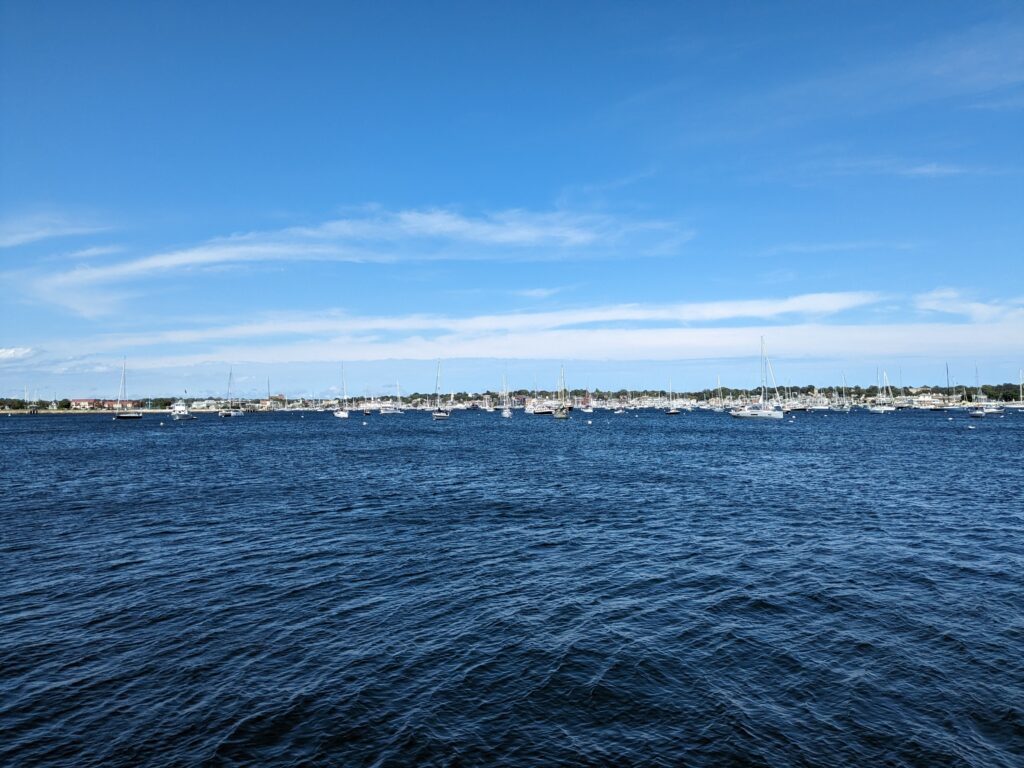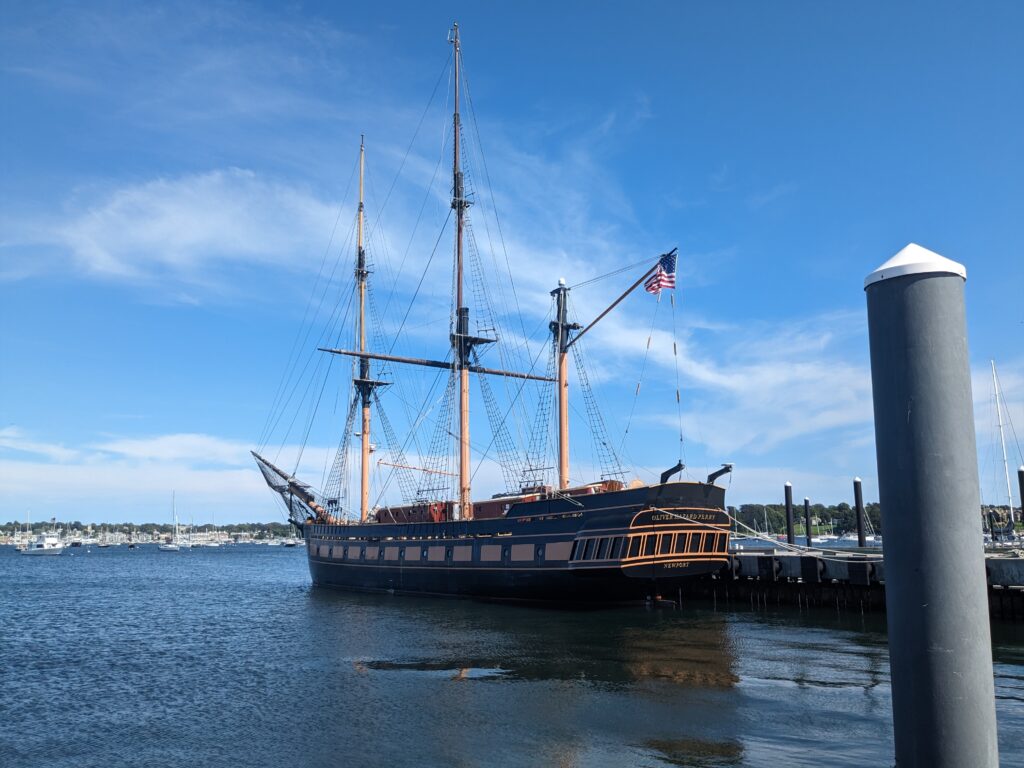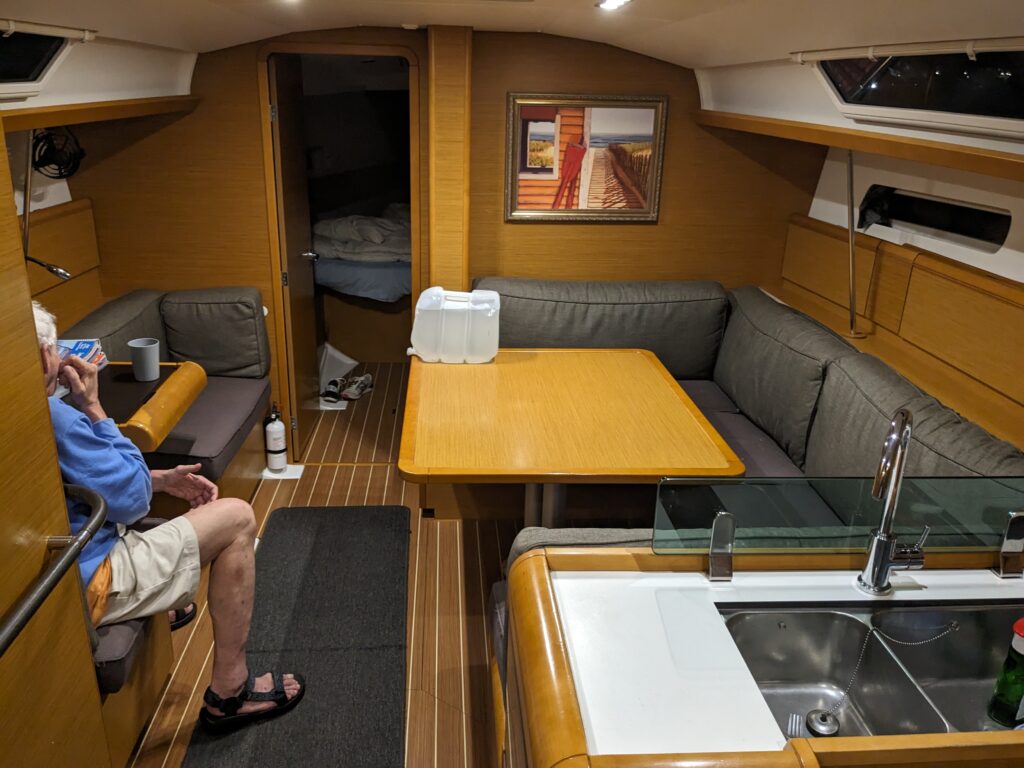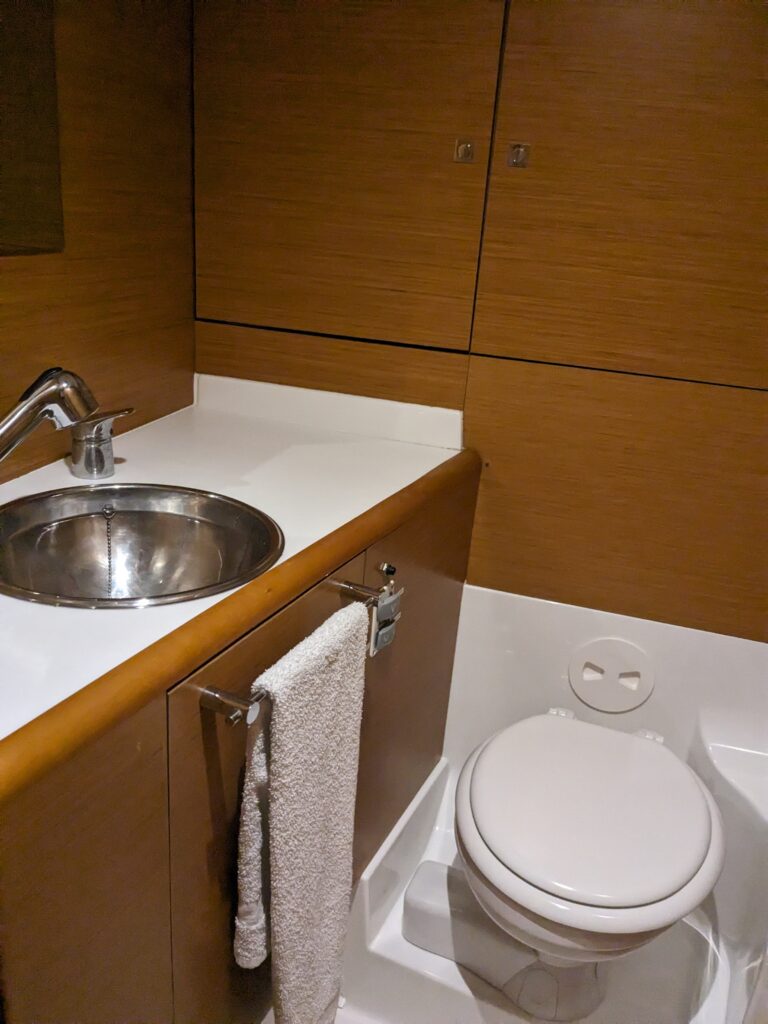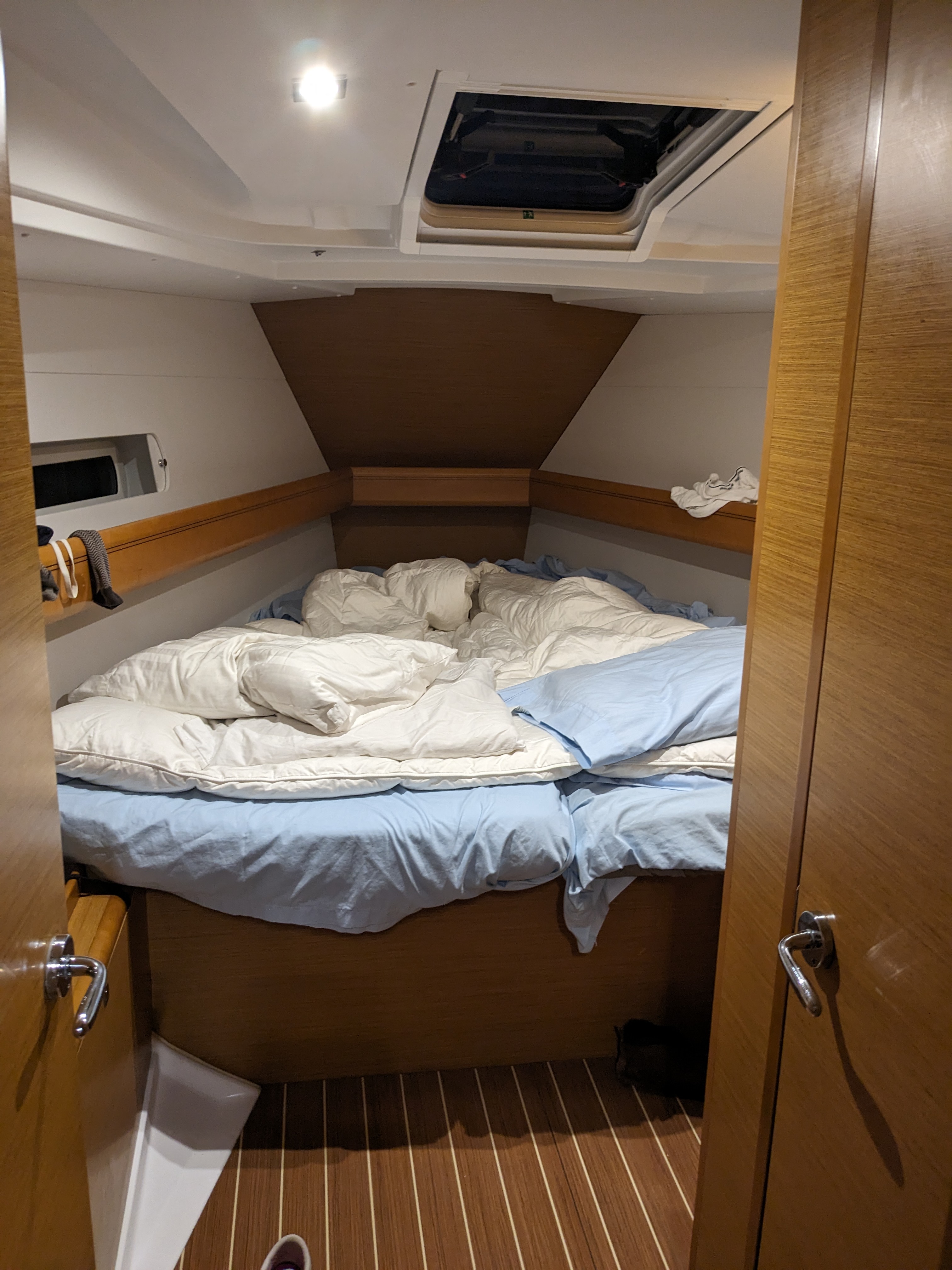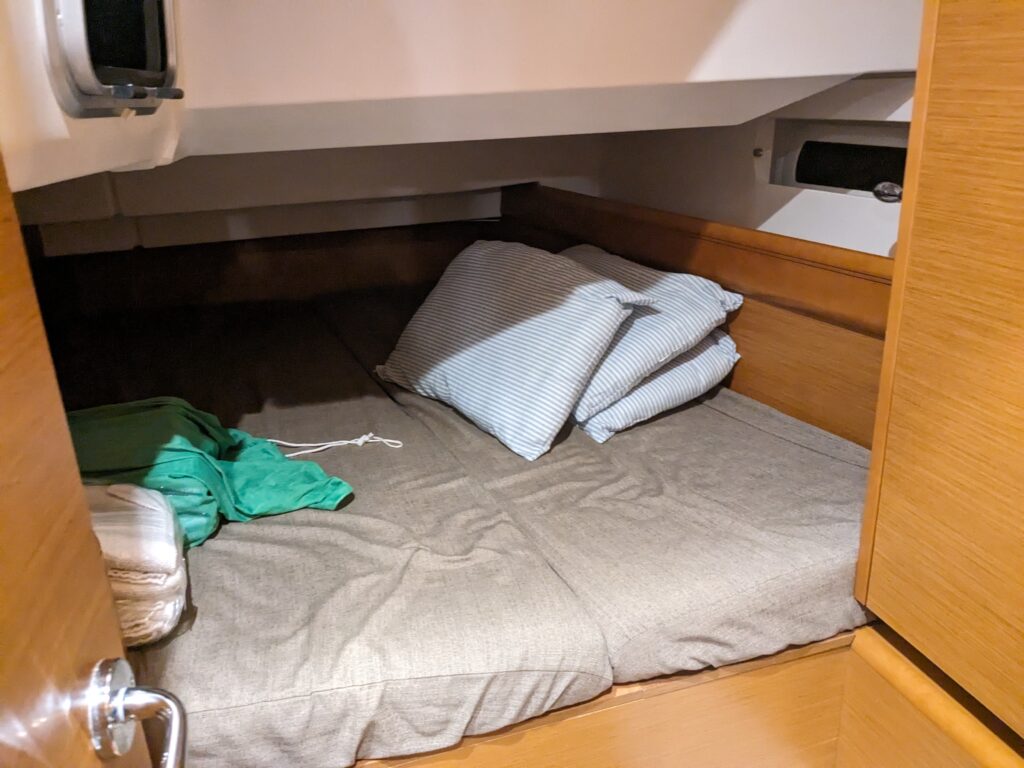We woke to overcast and rainy weather but the sun started to poke through by 9. We listened to the weather and decided we would stay in Edgartown at least through Sunday night.
After showers and Rick finally shaving we went into town. We start by finding a coffee shop and enjoying some tea and coffee. Then we headed over to The Carnegie museum where we learned a little of the history of Martha’s Vineyard.
- It was formed when the last great North American glacier retreated some 10,000 years ago.
- It was inhabited by the Wampanoag for thousands of years. In 1642 the Wampanoag numbered somewhere around 3,000 on the island.
- In 1602 an English vessel named the Concord, with Captain Bartholomew Gosnold anchored on the shores of Martha’s Vineyard. A shore party, dispatched to explore the island, reported finding a profusion of grape vines that prompted the Captain to name the island Martha’s Vineyard. Martha was either his daughter or his mother-in-law, who helped financed the voyage.
After our history lesson, we walked to Edgartown Pizza for a meatlovers pizza. There, Rick iniated a conversation with the owner and we learned about the pizza restaurant business, Martha’s Vineyard real estate and his other property in Israel. It was a lengthy conversation.
The Meat and Fish market was next to the pizza place so we stopped in. (The area where the car drove through the window had been repaired.) We bought a half rack of lamb. On our way back into town we stopped at Bad Martha’s brewery where Rick had a beer and of course a conversation with the bartender. We also bought some beer for the boat. Since Rick had a beer, Kathryn had to get some ice cream, so we made another pit stop at Scoops, the ice cream shop downtown.
We arrived at the dinghy dock and extricated our dinghy with the help of another couple. I don’t know why they don’t have a larger dinghy docking area????
We returned to the boat and decided to get fuel and water. Our fuel gauge said we were down only ¼ of a tank, but fuel gauges are often faulty on boats, especially charter boats. Also, we had emptied one of the two water tanks, so we wanted to fill that up too. We went to the fuel dock, tied up easily, and filled the boat with diesel and the dinghy with gas. Water was at a separate dock, so we headed there. It was unmanned so Kathryn had to jump off onto the dock to tie up the boat. We filled our water tanks and head back to our mooring.
While relaxing and watching the sunset we saw a seal cruising the mooring field, looking for fish. Unfortunately, we didn’t get a picture of the seal, but we did get a picture of the sunset.

We had a dinner of leftovers on the boat.

